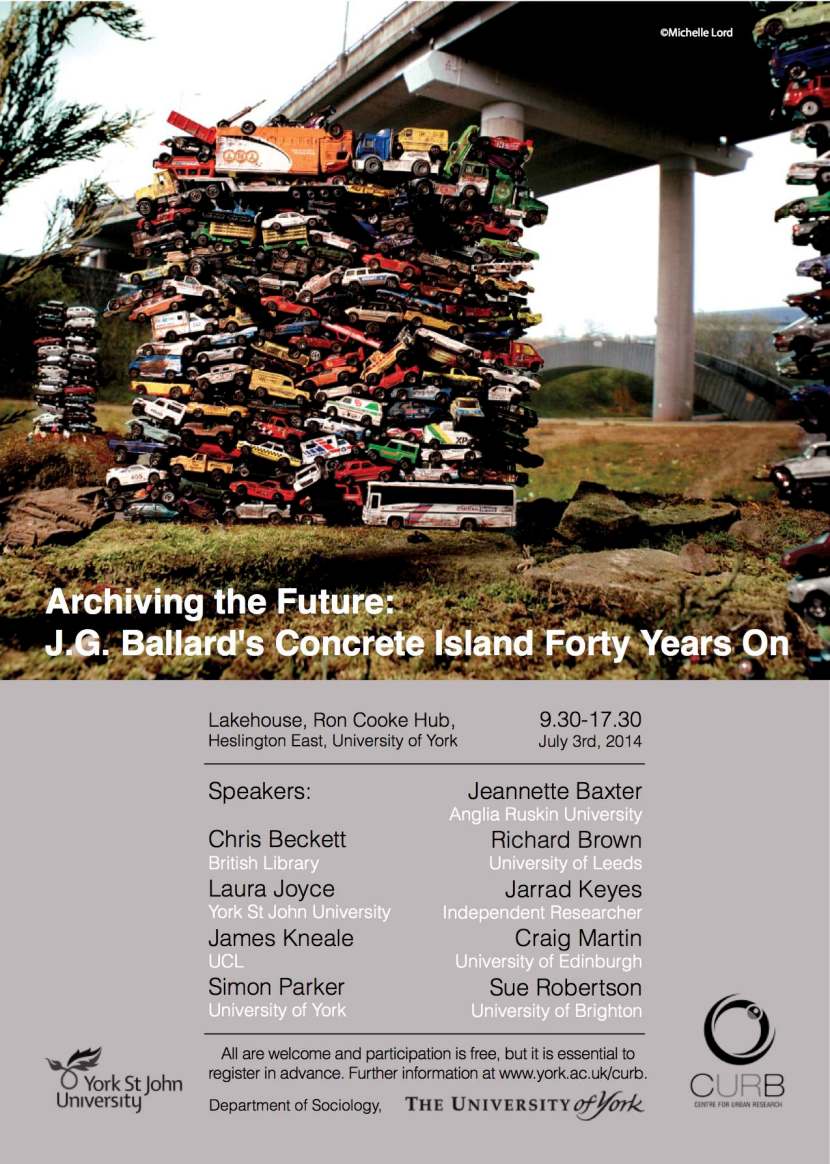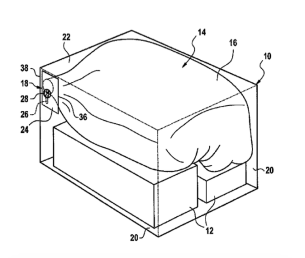
I will be taking part in a conference in the Department of Sociology at The University of York on Ballard’s Concrete Island. My paper is titled ‘Ad Hoc Material Practices: Making Do and Getting by on the Island’.
Abstract:
“Maitland reached up and began to shake the pipe with his hands. He wrenched it from the bracket and pulled the six-foot section of rusty tubing from behind the rear axle. His strong arms bent one end into a crude handle.”
This makeshift crutch offers Maitland some respite from his injured leg. Concrete Island contains a range of similar tactical survival measures, including the use of a car’s windscreen washer bottle as drinking water. This paper explores such practical approaches employed by Maitland on the ‘island’. It situates his use of pre-existing objects within a wider socio-political currency developing at this time in the early 1970s – ad hoc material practices. I specifically examine the confluences between the theme of ‘making do’ on the island and the turn toward adhocist tendencies developed in the book Adhocism: The Case For Improvisation by Charles Jencks and Nathan Silver. Ultimately the paper develops the thesis that the detritus of technological advancement offers potentially creative approaches to the use of seemingly redundant everyday material things.












